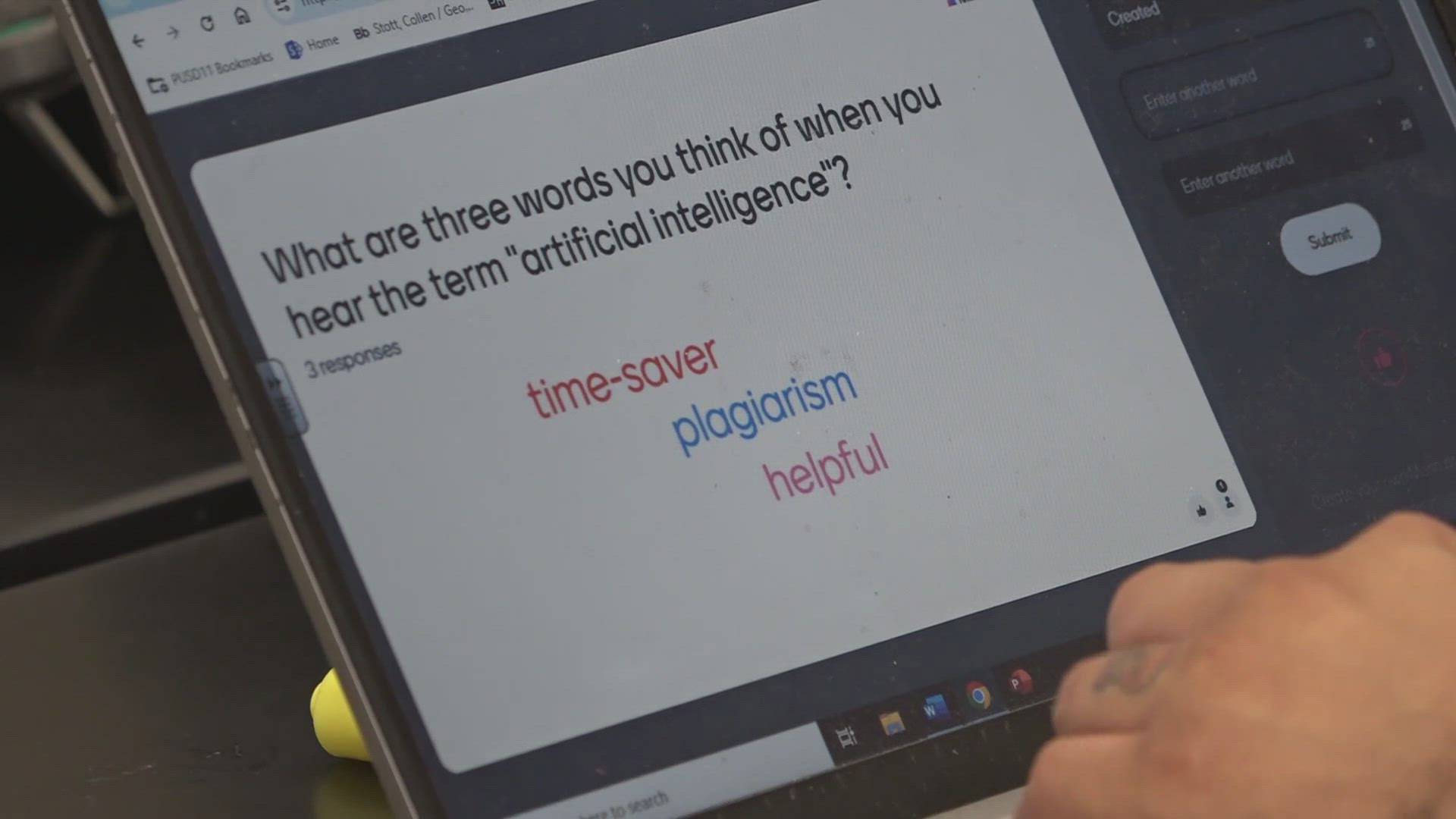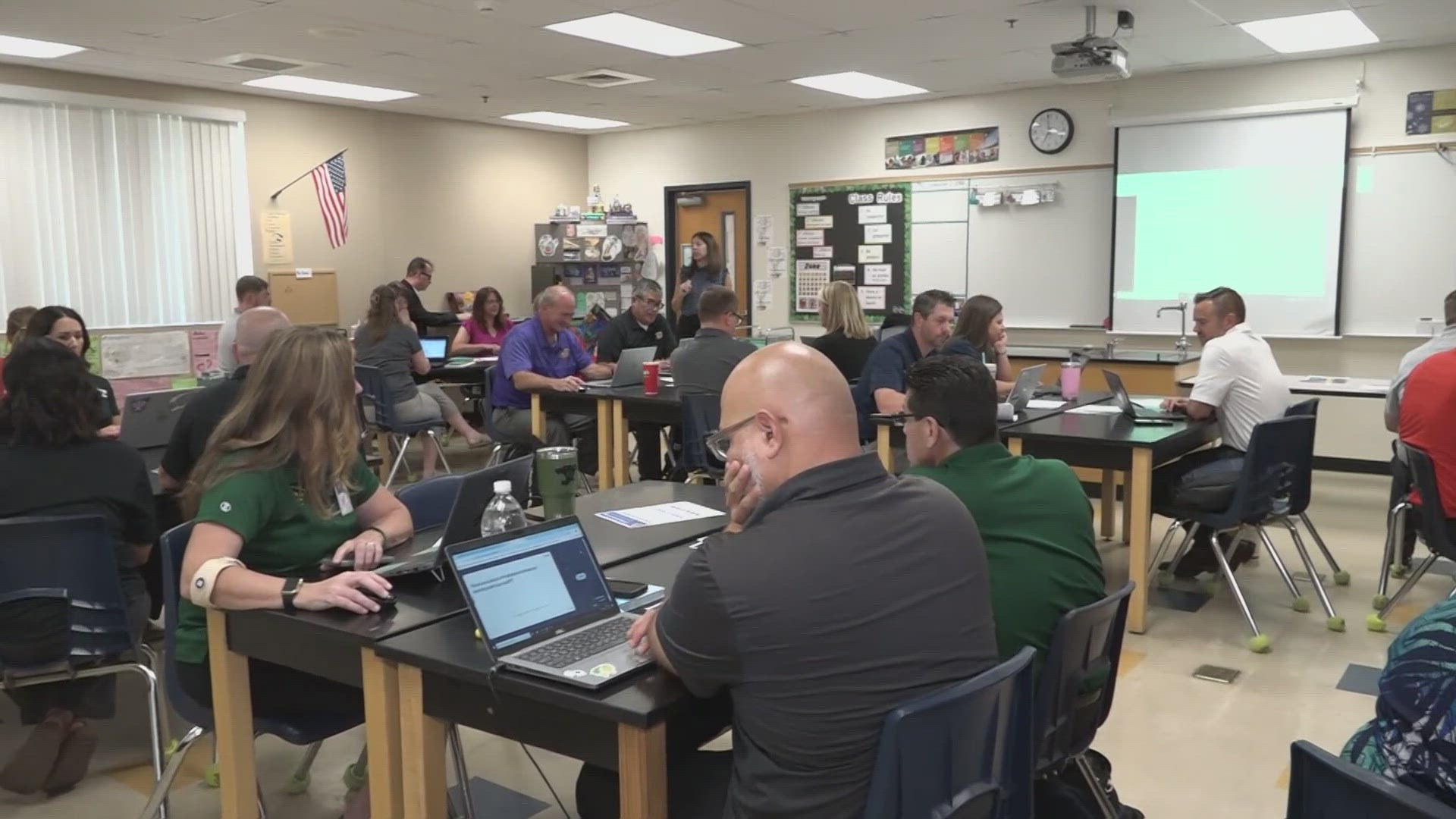PHOENIX — An Artificial Intelligence Challenge to assist schools in navigating AI is set to finish on Oct. 31. The challenge is working to protect Arizona classrooms from potential AI pitfalls. All participating schools are encouraged to use the next several days to finish up their tasks.
Even if school districts did not officially join the challenge, they’re still encouraged to complete the three tasks and work towards responsible and ethical AI implementation soon.
The challenge’s tasks are divided into three parts. The first two are focused on educators. The first of the three is to determine and communicate the do's and don'ts of AI tools and apps. The second is to train teachers and staff about pitfalls to avoid. The third part is focused on students and adopting a system to help teachers communicate AI use.
The Arizona Institute for Education and the Economy or AIEE, in connection with NAU, is behind the challenge. Institute leaders said Arizona school districts from all over the state participated, including Deer Valley, Scottsdale Unified, Blue Ridge, among others. The AIEE said one of their goals has been to provide specific guidance for school districts that don’t know where to start with AI.
The Institute’s Executive Director, Chad Gestson, said students need to know how and when they can use AI.
“We just need to be very clear with children, by the way, from early ages all the way through high school and university, when you have a green light to use it, when you have a maybe a yellow light to use it a little bit, but not fully, and when there's a full red light," Gestson said. "To make sure that students are still keeping up with competency, building their knowledge, but using AI appropriately in the classroom.”
School districts that complete all three tasks by Oct. 31 are eligible to win an AI professional development paid for by the Arizona Institute for Education and the Economy. Any parents, educators or school leaders interested in learning more about the challenge can click here to learn more.
The AIEE is also encouraging school districts to train students, teachers, staff and the community in more AI literacy. AIEE's LeeAnn Lindsey said AI is making misinformation even more frequent. The introduction of generative AI makes the intentional and unintentional creation of believable stories easier. Lindsey said the best way to combat misinformation is through AI literacy training.
"When we become AI literate, when we understand how AI works, then we are better able to identify misinformation, question the information that we're seeing, and basically have an overall understanding of how misinformation appeared in our news feed, our social media feed, or other media that we're running across," Lindsey said.
The Agua Fria High School District has been involved with the AI 3-in-3 challenge. The district said they’re excited to hear from other districts that participated. And, Agua Fria's Executive Director of Technology, Lauren Owens, said they created a framework, which the third part of the challenge references.
Owen said they’re in a unique spot because their district is the first public high school to partner with open AI and ChatGPT. They launched that in July, and it helped with the challenge because the partnership gave them premium safe and protected access to the program.
Owens said the first quarter of the year has been about innovation and getting students and staff talking about generative AI and how it affects the classroom. They talked about the stoplight framework in the third part of the challenge, which easily breaks AI use down into a stoplight analogy. Green generative AI use is allowed on the assignment, yellow generative AI can be used to assist in the creation of content and red, student generative AI use is not allowed and will be considered cheating.
Owens said they have created a framework helping them talk about AI literacy too.
“Because that is the gap right now, is we can understand it, we can talk about it, but what does it mean to interact with the technology intentionally and safely," Owens said. "And so ours is use and evaluate with care, where care references clarity, the A is for accuracy, R is for relevance, and E is for ethics. And so all of our staff have gone through that training.”
The district said the biggest push for them is by 2027, for AI literacy to be a top five skill students need to enter the workforce. So they’ve created a digital citizenship and AI literacy course for freshmen.
>> Download the 12News app for the latest local breaking news straight to your phone.


